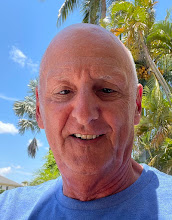Chicken in, Sirloin Out
Michael Osinski writes a fascinating article in New York Magazine in which he describes the role of software in the global economic collapse. His discussion is instructive, and you should read the whole thing.
About halfway through his piece, Osinski writes:
The aim of software is, in a sense, to create an alternative reality. After all, when you use your cell phone, you simply want to push the fewest buttons possible and call, text, purchase, listen, download, e-mail, or browse. The power we all hold in our hands is shocking, yet it’s controlled by a few swipes of a finger. The drive to simplify the user’s contact with the machine has an inherent side effect of disguising the complexity of a given task. Over time, the users of any software are inured to the intricate nature of what they are doing. Also, as the software does more of the “thinking,” the user does less.
The problem, of course, is that as software masks the complexities of any activity, humans understand less and less about the activity, or the constraints and bounding conditions that limit the accuracy or precision of the result. And too often, it’s the result we look for, not the details that got us there.
In many cases, that’s perfectly fine. But it wasn’t when Wall Street applied software to package and repackage CMOs, CDOs, and a wide range of debt obligations that ultimately exploded in their face. If the explosion maimed only the masters of the universe on Wall Street, that would have been okay. But the collateral damage injured all of us who were innocent bystanders.
Osinski’s computer programs were the basis for slicing and dicing mortgage and other debt obligations. In the words of one of his bosses, “You put chicken into the grinder and out comes sirloin.” Later, less and less chicken and more and more waste products went into the grinder, but to the outside world, the grinder still produced sirloin.
But my point is not to rehash the underlying causes of the collapse. I’ve discussed that in earlier posts.
Rather, it to pose a warning about the ability of software “to create an alternative reality.” Over the next decade, petaflop computers (google it!) will allow the creation of sophisticated models that become a substitute for reality. An ongoing example of such models are those that predict climate change. Like the Wall Street hotshots who used the software that Osinski built, climate alarmists never question (or understand) the complexities of climatic modeling, or the constraints and bounding conditions that limit the accuracy or precision of the result. “You put chicken into the grinder and out comes sirloin.”
No matter, software-based models helped Wall Street traders create one debacle. I fear that those who blindly believe Al Gore’s models may be setting the stage for policy decisions that create still another debacle. Can’t happen? Nobody thought it would happen on Wall Street either.

